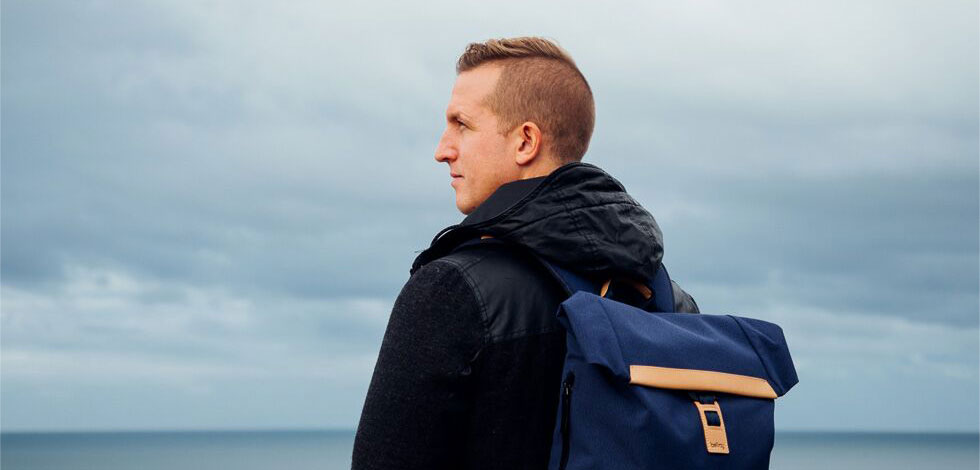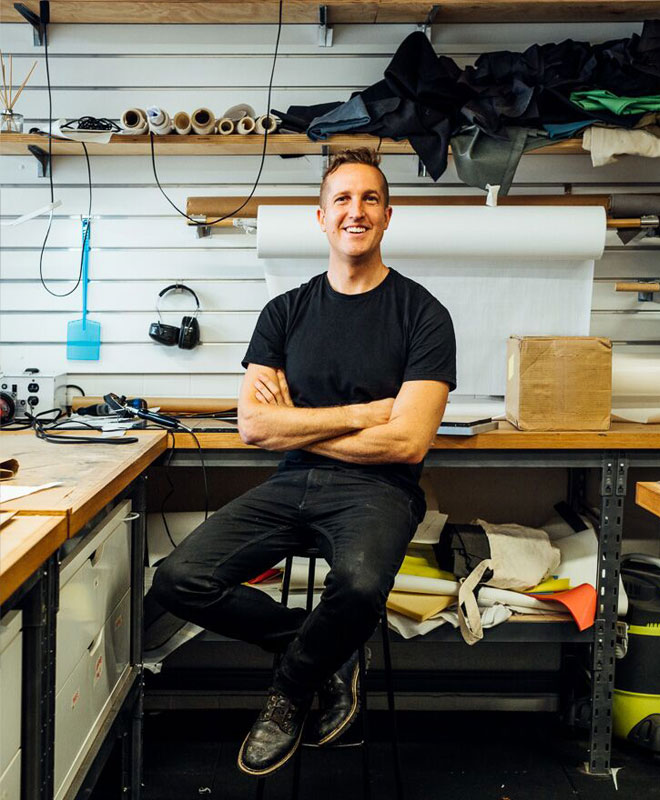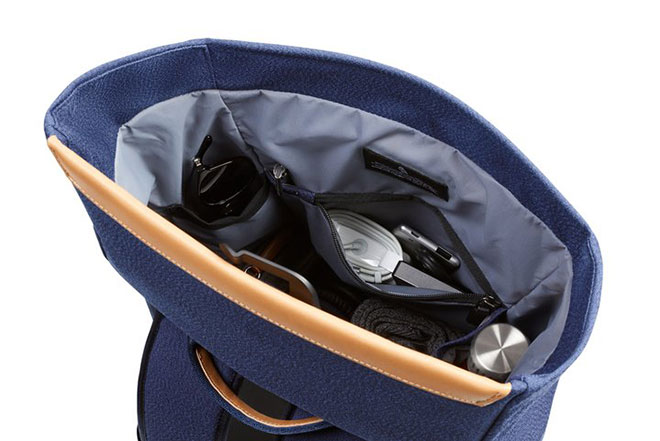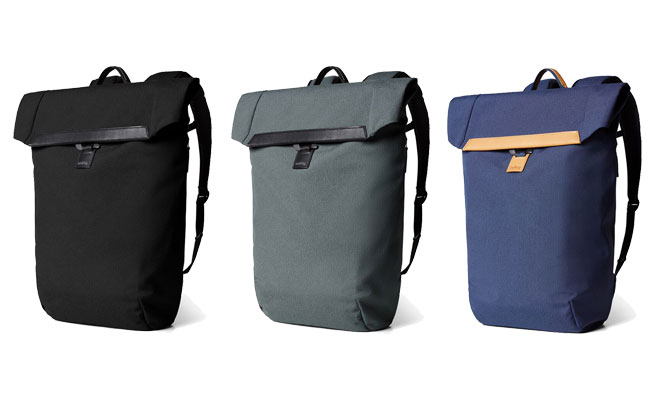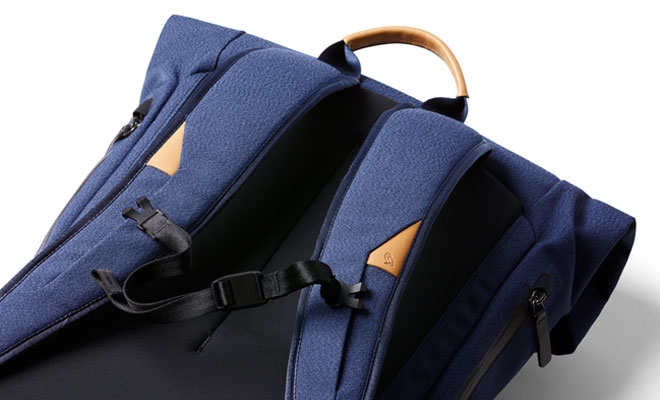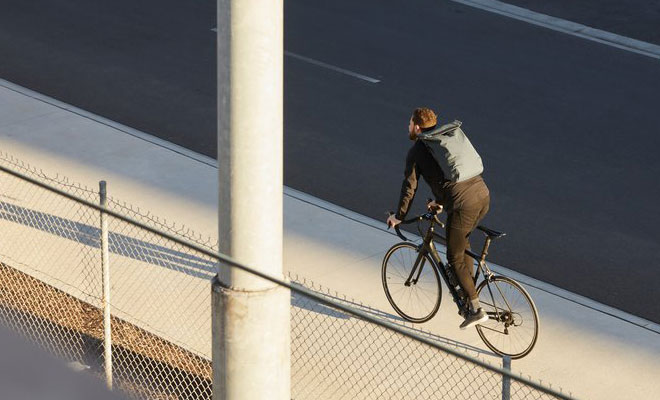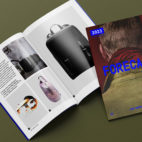Designing the Bellroy Shift Backpack
To mark the release of Bellroy’s newest – and in our opinion, finest – backpack to date, we met up with James Jeffrey, the project lead on this design, in the Bellroy design lab. Here, he shares the key elements in the design of their latest release: the Shift Backpack. It’s a pack that blends minimalist style with active performance like few we’ve ever seen.
With imbalance comes inspiration
In the carry world, performance and office-appropriateness are almost always mutually exclusive. If an office pack is blessed with a lovely silhouette, all that magic can end at a flat back panel and pair of thin, straight shoulder straps. On the flip side, if a pack has the harness to ride well on a bike, it walks into the office with dangly compression straps and hydration tubes that suggest you prioritize hiking and cycling over work. It’s a hard balance to find.
So it was this ‘balance’ that inspired us to create the Shift. And with it, we think we’ve achieved the best of both worlds – office and performance combined.
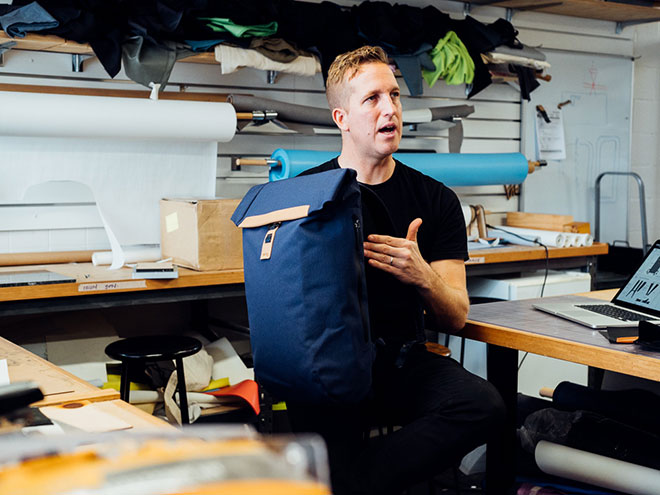
Discovering G-Hooks are broken
With our flap closure, we knew we wanted to develop something from scratch. Something that did more than the other options on the market. Something that would close effortlessly from different heights, without any noise, with one hand, only using friction and tension to do it.
So we started researching and ordering boxes of off-the-shelf options to tinker with – especially G-Hooks. And in doing so, we discovered G-Hooks were kinda broken.
The key insight was that existing G-Hooks are essentially two-dimensional and flat. If they’re not in constant tension, they can slip out. And when trying to close a bag one-handed, it takes a lot of twisting and angling of your wrist. So we started exploring what the hook would look like if it was more of a 3D barb, or something that slid straight across.
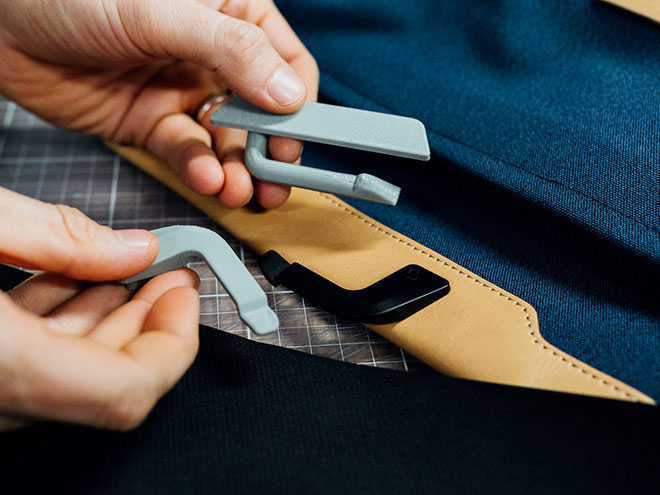
The first barb trials involved simple coat hangers. The big insight from this was that if you fixed the barb to the wider bridge of the flap, you can manipulate not the hook, but the whole flap. Closing it became more of an arm-based gesture rather than your fingers and wrist trying to maneuver it in – it made it easier, faster.
Then we designed the barb in 3D to lock in the tension on the X-axis. If you look closely you’ll notice the Slide-Hook has real contour to it – and all those contours are there for a reason. Its thin nose allows you to scoop it through the webbing loop easily. Its rising ridge creates tension. And then it slopes down into a squarish channel to create a locking mechanism.
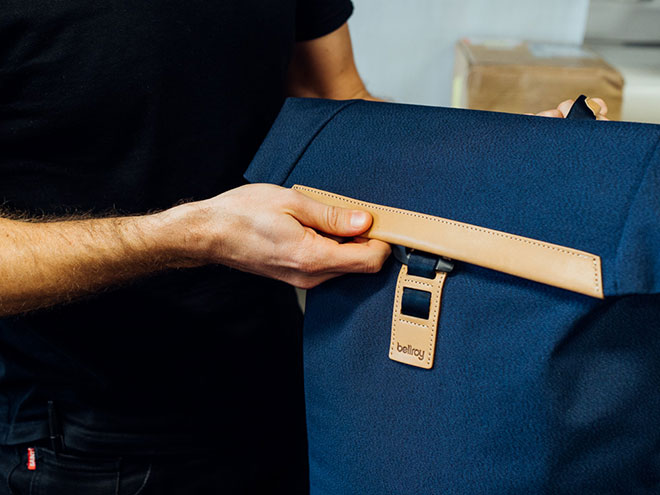
Tradesmen have it right, in reverse
Our guiding approach to pocketing at Bellroy is to use external pockets for things we need on the go (keys, wallet, metro card), and our internal pockets for things we need at our destination (work tools, toiletries, etc.). This keeps our transit smooth and our minds free to focus on things that matter (like our latest true crime podcast or page-turner).
In the case of the Shift, we really stepped up the internal pocketing…
We’ve developed what we call the ‘reverse tool-belt’. When you see an excellent tradesperson, their tool-belt becomes an extension of themselves. They seamlessly dive their hands down and retrieve whatever tool they need at any time. They have a direct line of sight, always. But for us, whacking half a dozen pockets on the outside of the bag would destroy the clean silhouette that lets the bag move through different environments. So we flipped the tool-belt and created a ring of organization on the inside. It sits high, in hand’s reach from the opening, and makes our daily tools visible and easily accessible.
Having the belt up high – off the lower section of the main volume – helps when packing big, awkward and heavy shapes into the bottom without feeling like you’re squishing or damaging anything else.
Venture-weave: a wonder fabric few know
When considering our outer fabric we knew we needed weather resistance, durability, and office-appropriateness. Venture-weave was the obvious choice, with the subtle crimping of the yarn creating interest and surface appeal.
As far as durability, Venture-weave is a really interesting fabric, the stuff is just rock solid. The underlying principle is that the filaments themselves are kind of put through a 1980s-style hair crimper so that they end up a zigzag shape – just like crimped hair. After this crimping is done, it’s woven together.
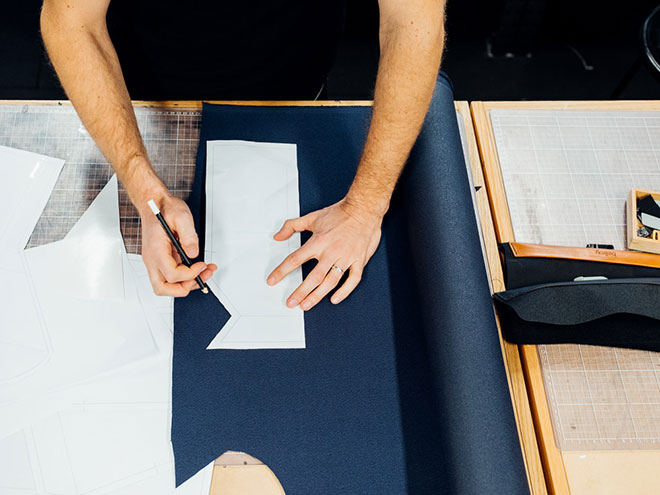
In a standard weave, both the fibers are flat so you get a really even and consistent crossing over of the threads. The high points (the top/surface layer) are the spots that take the abrasion and stress of use. So consistently across the whole thread, these high points keep getting exposed again and again.
But with Venture-weave, the pre-wrinkled woven fabric resists that repetition. The dispersion of ‘high points’ is irregular, which puts the wear across a greater number of threads in a lower number of spots. You end up with a much stronger and much more abrasion-resistant fabric.
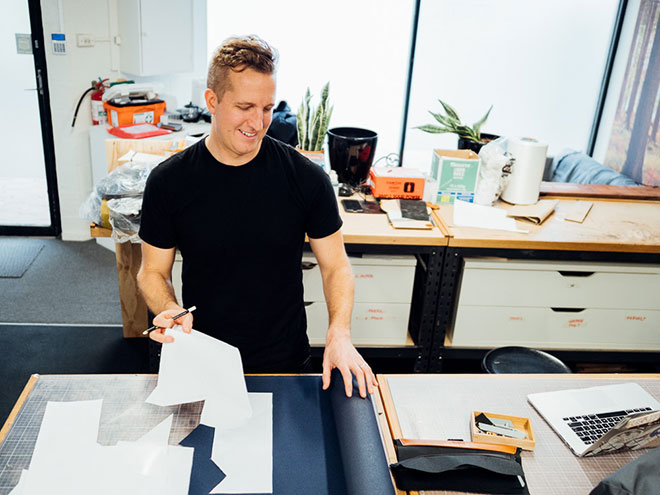
In addition to that, the slight color variation is one of the biggest things to help it keep looking clean. The more even a color is, the easier it is to spot any flaws. The natural tone variation of the Venture-weave means it disguises that a bit more. You’ll still need to wipe it down, but it’s not going to be like a really tight ballistic black that will show any flaw or fleck of dirt. And when it comes to lint etc., it doesn’t attract that much either, so yeah, there’s a lot to love.
“The dispersion of ‘high points’ is irregular, which puts the wear across a greater number of threads in a lower number of spots. You end up with a much stronger and much more abrasion-resistant fabric.”
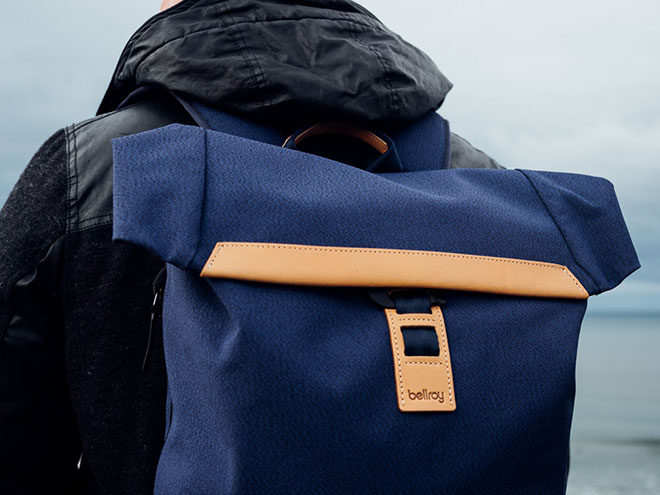
Sealing off the weather with less work
We needed the Shift to be able to spend some time in heavy rain. Not a heap, but enough to get you and your gear through a wet commute home, safe and sound. We did a few things to help this. The center flap panel is laminated to add stiffness for better closing and to add heavy water resistance through the center.
Moreover, we wanted to construct a flap that could close at various heights and continue to have a self-sealing side edge that gives you water protection. But we didn’t want to have the penalty of a roll-top bag where you’ve got to fold it, pull it back over itself and close it with clips. We wanted it to be much easier than that. We needed the ability to fold the flap down and have the two side wings tuck in. The big insight here was to stiffen the front lower opening, and to make a pivot point for the flap and side wings to close over and ‘seal’ the opening.
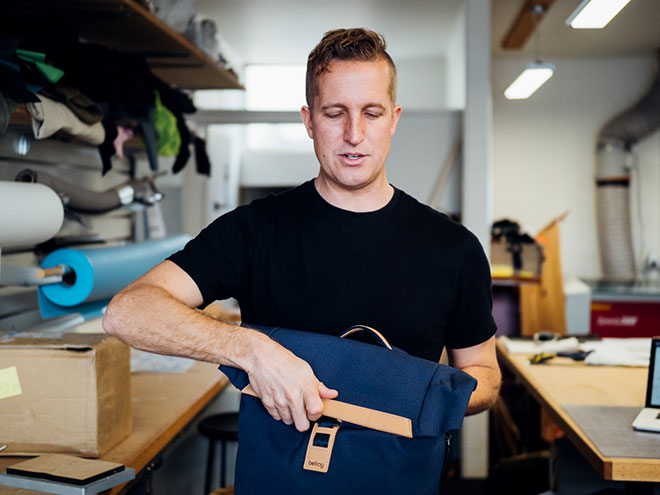
We also considered the position of each and every seam. For example, the main construction seams on the back are positioned away from the laptop compartment. So, even in worst case scenarios your laptop will not be in a part of the bag that has water wicking to it. By considering the positioning of everything, we managed to give this bag a heavy shower-proof rating while still maintaining its ultra-clean look.
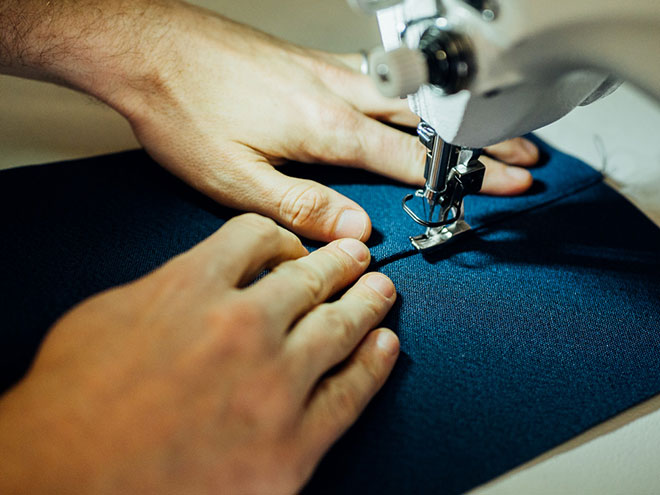
Blasé back panels: death to the tombstone
We joke internally about ‘death to the tombstone’. The ‘tombstone’ we refer to is the very common flat tombstone-shaped back panels that brands use as a default. It’s like, you have all these great lines that end at this plain tombstone panel and that’s where all the magic dies.
We avoid that at all costs. With the Shift, everything is interconnected – there’s a 3D interplay between all of the panels. Which is why, down through the back of the bag, you’ll see that the lumbar support grows out. We actually have that lower panel swoop around and actually become the front and sides of the bag.
When cutting corners is a good thing
Given the opportunity, we try to avoid rectangular or boxy shapes. The main reason for that is that when you just take the edges off, you start to reduce the wear areas. So if you do end up brushing against the wall, you’re not always going to be clipping the same pointy spot. You’re going to be sharing that burden across more of the pack.
Straps that perform, but don’t show it
The challenge with the straps was that we needed performance – straps that would perform when you’re hunched over and pedaling hard on a bike – but also look the part in the office. Something clean and streamlined, not bulky. In the end, I think we found a way to make a complex strap look simple.
We designed them with the shaping and curvature you’d expect. But made them very thin and understated so they won’t stand out when slung over work attire.
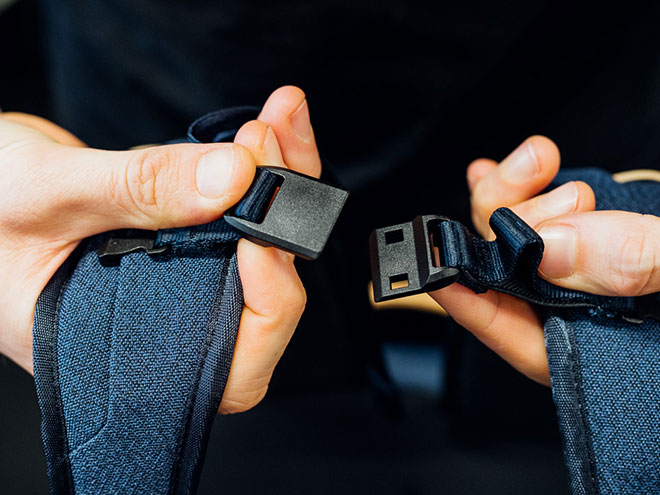
For comfort, we applied dual-density foam. The top layer of foam we’ve kept as a really firm PVA. That foam gives it the stability and structure so that when you’re just draping it over your shoulder, it doesn’t look like a soft, puffy, comfort-focused strap. Then, on the underside, we’ve got a really thick open-cell foam that is puffy and has a lot of cushion to it, and that’s the stuff that is going to be sitting snugly on your shoulders. So you get the best of both worlds, where the top looks very controlled and the underside feels really soft and comfortable.
In addition, we kept the padding away from the joining seams at the top, so that the strap moves around and fits to different-sized frames.
Laptops aren’t meant to bend, right?
We found that a common issue with packs, especially packs that are marketed as ‘bike packs’, is they position the laptop compartment flush with the back panel. So when you hunch forward to ride, it’s not only uncomfortable but it puts stress on the laptop.
We mounted the shoulder straps and webbing anchors to the main construction seams, away from the laptop sleeve construction. So when your back curves, the laptop has some independence and freedom of movement. Small amounts of flexibility like this will help prolong the life of your device.
Lumbar support that adjusts as you do
We wanted lumbar support. Instead of adding a standard, static pad we patterned it into the back shaping of the bag. The result is a more natural and dynamic lumbar support. It moves and adjusts as you do – it’s soft enough that it pushes out of the way when it needs to, but will always return to the small of your back. It really serves an unexpected level of comfort when carrying the bag.
More importantly, it compresses and moves out of the way when you have a full load. So if you cram your bag to absolute capacity you are not forced to try and be comfortable with a hard pad of foam jamming into your back.
“Instead of adding a standard, static pad we patterned it into the back shaping of the bag. The result is a more natural and dynamic lumbar support.”
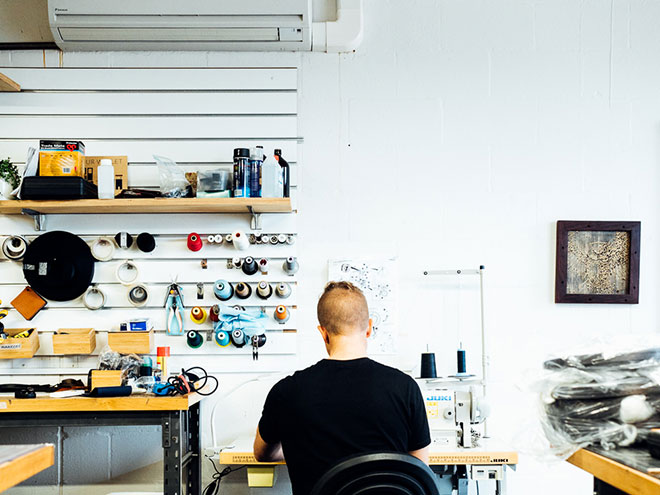
Wrapping up
All in all, the team and I are really proud of the Shift. It’s a pack that we’ve personally been searching for for years, but never found it done right. In daily use, it rides well. Walks into the office with elegance. Gives you access to the right essentials and tools at the right time. And expands when you need it to, i.e.: like when your brother drops by for a surprise visit and you need to swing past the store for a case of beers (this actually happened last week!).
For us, it’s a blend of elegance and functionality that’s hard to find. And we hope in making the Shift, we’ve made a work pack that some of you have been searching for, too.
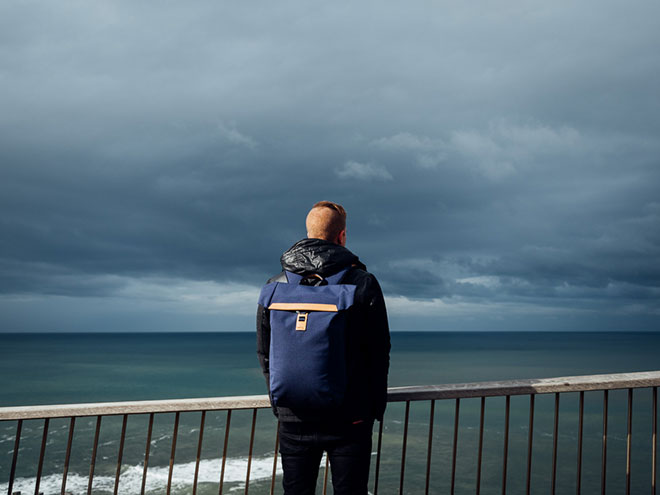





 Carry Awards
Carry Awards Insights
Insights Liking
Liking Projects
Projects Interviews
Interviews
